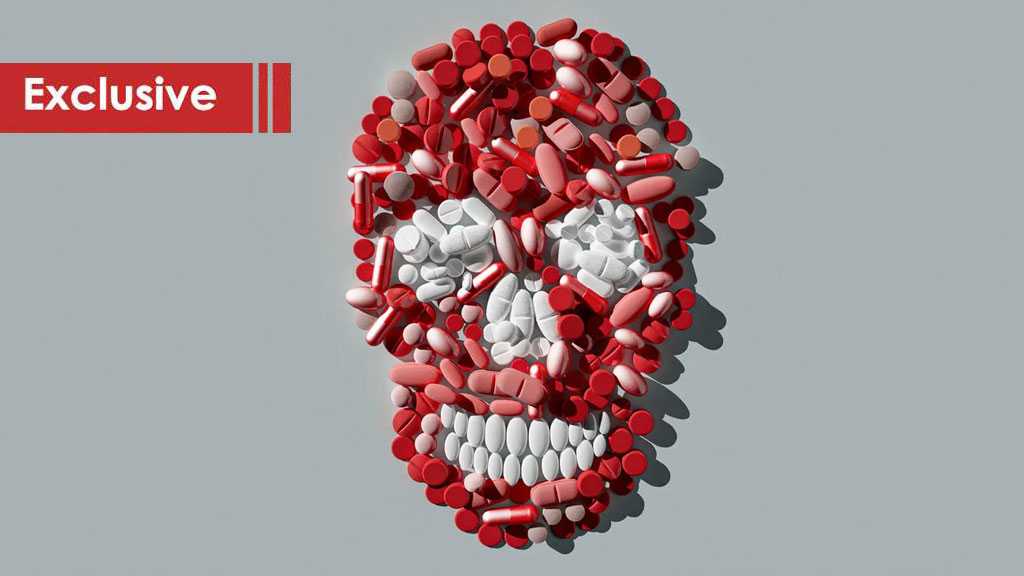America’s Drug Epidemic: Fentanyl and the New Face of Addiction

By Mohamad Hammoud
A synthetic opioid 50 times more potent than heroin is now the face of a national emergency. But fentanyl is only the sharpest edge of a far larger crisis—one that reveals how addiction, despair, and policy failure have reshaped America itself.
While Washington obsesses over foreign wars and bankrolls “Israel’s” bombardment of civilians in Lebanon and Gaza, another battle rages unacknowledged at home. Streets from Philadelphia to Portland are collapsing under a quieter invasion—one measured not in missiles, but in milligrams.
The United States now leads the world in illegal drug use. Nearly 17 percent of Americans aged 12 and older—some 47.7 million people—used illicit drugs in the past month, and around 70 million did so over the past year. Addiction has become the nation’s hidden epidemic, cutting across class, geography, and ideology alike.
In 2023, about 105,000 people died from drug overdoses, a rate of about 31 per 100,000. Some 93 percent of those deaths were unintentional; opioids accounted for roughly three-quarters of fatalities, with fentanyl driving the surge. Overdoses claim more lives annually than U.S. military deaths in recent conflicts, yet federal spending on drug control—about $35 to $40 billion—pales beside the roughly $850 billion devoted to military operations.
The Invisible Killer
Fentanyl is a microscopic killer—up to 50 times stronger than heroin and blamed for about 72,000 US deaths in 2023, nearly 200 a day. The DEA says 42 percent of counterfeit pills it tested contained a lethal two-milligram dose. It now contaminates cocaine, meth, and fake painkillers—often without users knowing. “For Americans 18 to 45,” a DEA official warned, “fentanyl is the leading cause of death—more than car crashes or COVID-19.”
The crisis cuts across race and class. Black and Indigenous communities suffer the highest death rates, and teen fatalities have nearly doubled since 2019. These aren’t just addicts—they’re students, nurses, factory workers, ordinary people seeking relief or escape. Behind every number is a broken family.
A Moving Target
The problem runs deeper than demand. Fentanyl is synthetic—made in labs, not fields—so its chemistry can be altered at will. Illicit chemists craft analogues—minor molecular tweaks that evade bans. Scientists at Los Alamos and the Pacific Northwest National Laboratory report that fentanyl’s low vapor pressure makes it hard for dogs and many sensors to detect, and by the time authorities adapt, traffickers have moved on.
Some variants, like carfentanil—used to sedate elephants—are vastly more potent, turning interdiction into an endless lab race. Each new molecule reshapes the battlefield between law and trafficker.
The Global Supply Chain
The trail often begins overseas. After China banned finished fentanyl in 2019, suppliers shifted to sending precursor chemicals to Mexican cartels, who synthesize the drug and smuggle it north. In 2024, US prosecutors indicted multiple China-based firms for hiding those precursors in industrial shipments. Sanctions and diplomacy have slowed some channels, but trade continues amid broader geopolitical friction.
Beyond the Border: The Domestic Fallout
The social and economic toll is staggering—about $1 trillion a year in healthcare, lost productivity, and criminal justice costs. Addiction fuels homelessness, joblessness, and family breakdown, while cities face rising theft, violence, and overcrowded courts. Drug offenses continue to drive mass incarceration and widen racial inequities.
Youth exposure adds to the strain: nearly 13 percent of adolescents use marijuana regularly, and schools struggle to keep prevention programs relevant. Substance misuse also feeds cycles of trauma and violence—research shows drugs or alcohol are involved in roughly two-thirds of sexual assaults, affecting both perpetrators and victims.
A War Without End
Between 2021 and 2024, federal agents seized hundreds of thousands of pounds of fentanyl and its precursors—yet the flow barely slowed. One kilogram can yield half a million lethal doses, making it cheap to produce and nearly impossible to contain. Experts warn that chemistry evolves faster than legislation, turning every ban into a temporary fix.
Meanwhile, Washington pours hundreds of billions into weapons and endless wars—funding “Israel’s” assault on civilians—while leaving its own citizens vulnerable to addiction, despair, and neglect. The crisis is not just about smuggling routes or drug labs; it’s about untreated mental illness, economic collapse, and a shredded safety net.
As one Texas physician put it, “We’re not just fighting a drug. We’re fighting a culture of silence, stigma and speed.” Until America confronts addiction as a public-health emergency rather than a moral failure, the chemistry will keep changing—but the tragedy will stay the same.



